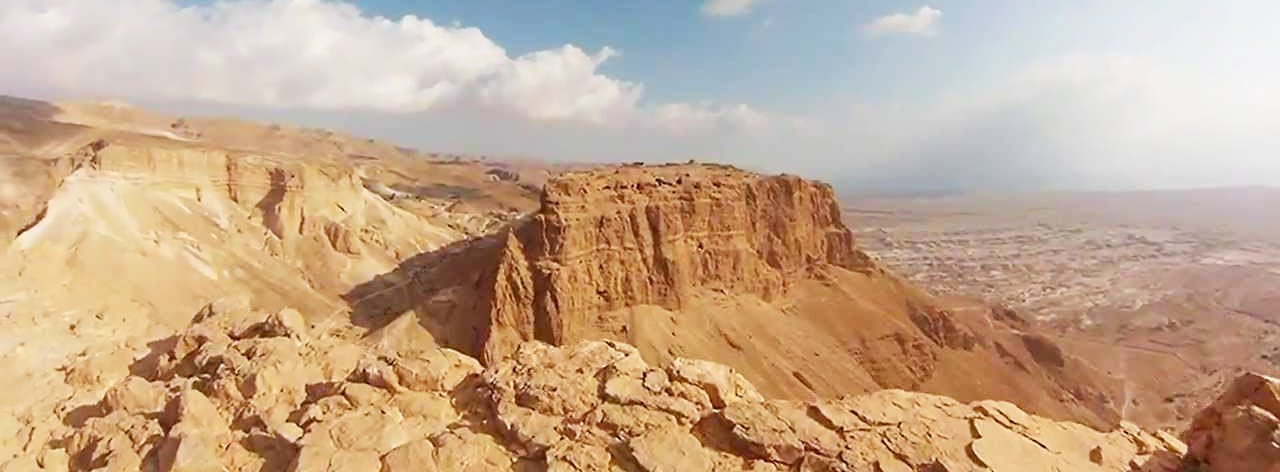
Bible, History, Archaeology
Bible,
History,
Archaeology
The oldest mention of Jerusalem
found on a 2,700-year-old papyrus?
On October 26, 2016, the Israel Antiquities Authority (AAI) presented a 2,700-year-old papyrus mentioning the city of Jerusalem. What's at stake in such a discovery?
Where does this papyrus come from?

Image opposite: Israeli and foreign volunteers take part in the excavation of a cave in the Tzeelim canyon in the Judean desert, June 1, 2016. AFP/Menahem Kahana.
The region offers an ideal environment for preserving these fragile documents, and has already yielded almost a thousand ancient manuscripts copied on parchment or papyrus. Most of them were discovered by local Bedouins, who know these caves better than anyone else and know the value of such a find on the antiquities market.
This time, however, the Israeli authorities, having learned of the sale of a new papyrus, launched an operation and succeeded in confiscating the precious document.
The fragment of a papyrus from the First Temple period bearing the earliest mention of Jerusalem in Hebrew. © DR.
What does the papyrus contain?
Only three lines of Hebrew script have been preserved on a papyrus strip that, in its present state, measures 10.9 × 3.2 cm. The tear at the top and the lower margin indicate that this is the very end of the document. Michaël Langlois, PhD in history and philology, proposes the following provisional reading:
2′ נת.המלך ממערתה.נבלים.יי
3′ ן.ירשלמה.
2′... the king, [from] his cave, two jars [containing] vi-
3′ n, to [destination of] Jerusalem.
The few traces of letters at the top make it impossible to reconstruct the first line, let alone those that preceded it. The first two letters of the second line preserve the end of a word whose restitution is also uncertain. Next comes the mention of the king, followed by a term that Israeli scientists read as «de Naarata».
Michaël Langlois would rather translate «de Vers-Naarat», but on the photograph he was able to consult, the first letter could be an M, so he tentatively suggests reading «de sa caverne» or «de Vers-Maarat», until he can examine the fragment itself.
Maarat is a Judean city mentioned in the Bible (Joshua 15:59), but the same word means «cave», so both translations are possible, the cave then serving as a wine cellar. The number of jars is uncertain: M. Langlois suggests «deux», but it could just as easily be «des».
The document ends by specifying the destination of these jars: Jerusalem. It is this last word that attracts the attention of the media since, we are told, it is the first time the holy city has appeared on such a papyrus.
mention of Jerusalem

Such discoveries remain exceptional.
Image opposite: Nahal Tzeelim overlooks the Dead Sea in the Judean desert © Ilan Ben Zion/Times of Israel.
The interest aroused by the mention of Jerusalem on this papyrus is therefore understandable. Yet this is not the first time this city has appeared in history: it is found, for example, on a Hebrew inscription engraved on the wall of a Judean cave at Khirbet Beit Lei, west of Hebron. Above all, it appears as early as the 14th century B.C. in correspondence between the Pharaoh Akhenaton and his vassal in Jerusalem. It may even be attested several centuries earlier in other Egyptian texts. The existence of a kingdom of Judah is well documented from the 9th century until the capture of its capital, Jerusalem, by the Neo-Babylonians around 587 BC. From a historical and archaeological point of view, there can be no doubt that in the 7th century Jerusalem was the capital of the kingdom of Judah, and already bore that name.

A general view of the Judean desert, Israel. © DR.
A mysterious papyrus
The sensational nature of this papyrus almost overshadows the questions it raises. Is it the King of Judah who brings wine to Jerusalem from his personal reserves? Is it one of his subjects who sends him this wine, as a gift or a tax? Or does a neighboring king offer his Judaizing counterpart some of his best bottles? What did the preceding lines contain? If it is authentic, this papyrus has yet to reveal all its secrets!

